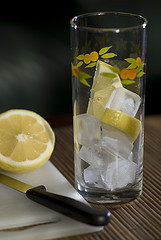 A recent study conducted by IBM in Great Britain uncovered some non-intuitive trends. Although millenials seem to be the most aware of environmental issues in general, they still remain grossly ill-informed about the specifics, and waste more resources than their elders. It seems, having rarely experienced shortages themselves, British youth consume utilities with little consideration while professing eco-consciousness. For instance, approximately half of millenials surveyed waste a dozen or more gallons of water per day by running the shower before use, and not turning off the tap while brushing teeth. More astoundingly, 55% of youth—and 43% of Britons overall—were unable to indicate that a dryer uses more energy than a typical light-bulb!
A recent study conducted by IBM in Great Britain uncovered some non-intuitive trends. Although millenials seem to be the most aware of environmental issues in general, they still remain grossly ill-informed about the specifics, and waste more resources than their elders. It seems, having rarely experienced shortages themselves, British youth consume utilities with little consideration while professing eco-consciousness. For instance, approximately half of millenials surveyed waste a dozen or more gallons of water per day by running the shower before use, and not turning off the tap while brushing teeth. More astoundingly, 55% of youth—and 43% of Britons overall—were unable to indicate that a dryer uses more energy than a typical light-bulb!
Frugality is founded on the principle that all riches have limits. – Edmund burke
Unfortunately, conscientious use of resources does seem to correlate more with personal experience of scarcity rather than expressed concern for the environment. So, next time you’re rinsing out your coffee pot, consider using the fluid to brew your next batch, or make flavored ice cubes for an iced coffee. Cooking pasta? Water the garden after draining.




 A little over a year ago
A little over a year ago 




